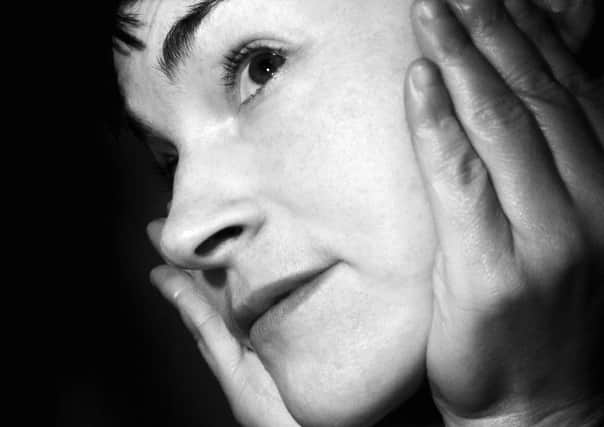Obituary: Anna Krzystek, dancer and choreographer


Anna Krzystek’s work as a choreographer and dance artist was, in many ways, a kind of philosophical inquiry – relentlessly honest and profoundly inquisitive. She often set herself painfully difficult physical challenges, giving her work a sense of inner struggle. Her incredible self-determination was much admired and praised by critics and her peers, many of whom were in awe of her discipline and uncompromising vision.
Born in London to Italian mother Grazia and Polish father Pawel, she grew up in Dalston Hackney where she attended Haggerston Secondary School. Her father passed away when she was 24, and she had a very strong bond to her mum Grazia, who came to stay with her regularly in Glasgow.
Advertisement
Hide AdAdvertisement
Hide AdIn a Scotsman interview in 2011, she described herself as ‘one of life’s observers. There’s always been something about me looking at the world like a big installation, finding how things connect.’
As a child, her mother recalls, she would spend a lot of time at home reading or dancing round the living room. Her passion for dance grew during her teenage years after seeing a contemporary dance performance at school.
‘I was 16 years old, in a gym hall with lots of other kids, and there was a dancer doing abstract movement to a sound-score,” she said in 2011. “The kids were all screaming and shouting and throwing things at this poor performer and I thought, ‘That’s it. This is what I want to do with my life.’
She went on to study dance at City of London College and later continued her training in New York at the Merce Cunningham School and under Melanie Klein. She grew to love New York and for many years Manhattan became her second home.
As she described it, “I’m so very grateful for my time at Merce Cunningham. My own work is very far away from his, but things that have stemmed from Merce Cunningham’s thought process have been incredibly influential to me.”
It was straight after her college studies and in between her times in New York that I got to know Anna. In 1988 she joined the theatre company Dudendance, to which she immediately contributed a mix of extreme discipline and amazing comedic skills. She was extremely shy at first – she was going through an intense time regarding her body image as a dancer. In our first performances she refused to go on stage without a mask to hide her face because she wanted to “disappear into the background”.
A commission in 1993 from Paisley Arts Centre brought the company to Glasgow, which would become her home.
Living off the dole with occasional support from the Scottish Arts Council, we worked almost every day, spending hours embedded in cardboard boxes or rolling round on dusty floors experimenting with method acting.
Advertisement
Hide AdAdvertisement
Hide AdIn 1996 they moved together to an old mansion in Rosslyn Terrace – paying rent of only £25 each a week inclusive, and granted one bath night a week. Due to the affordable rent Anna stayed there for many years before she finally moved to her flat in Partick.
She loved cinema – Glasgow Film Theatre was her church – and developed various crushes on stars such as Val Kilmer, Patrick Swayse and Al Pacino, who she actually met at a master class in New York. Her favourite directors included Martin Scorsese – she knew the script to Goodfellas by heart – and Woody Allen.
She was also a skilled camerawoman who earned the nick-name “steady-cam” because her precision and control meant there was never any need for a tripod.
Anna and Dudendance parted ways in 2000 when she became a founding member of the Finnish Collective OBLIVIA, with whom she worked until 2013, spending many years living between Glasgow and Finland.
She toured extensively across 26 cities in Germany, Finland, Scandenavia and Scotland with award-winning works. This provided some reliable income and introduced her to many venues and festivals in Europe.
From 1997 she also began to commit more time developing the work for which she is best remembered – her solo pieces. In contrast to her work with Dudendance and OBLIVIA, and inspired by Merce Cunningham and John Cage, she embraced a minimalist approach – working tirelessly on her own in the studio.
She had a unique ability to focus, scrutinising herself, her place in the world, and what it means to be alive. She produced two major cycles of work, The Zerogic Events (1997-2000) and The Wait series (2004-2013). In 2016 she produced a three-screen film installation as an initial research for a more ambitious cycle of work The “Untitled” Series.
Writing about this process, she said: “Understanding of the world rests on essentially Nothing; absence and departure as well as presences. In looking at Nothing everything comes into focus.” The technical ambitions for Untitled 1 saw her vision became more ambitious, and she would have struggled without adequate support.
Advertisement
Hide AdAdvertisement
Hide AdIn 2016 she decided that, for a while at least, she would support herself through a proper job, and she joined the team at Creative Scotland as their Interdisciplinary Performance Officer. The organisation described her as “an inspiring and passionate colleague applying her fierce intellect and curiosity and an extraordinary capacity for empathy and kindness to her work in representing and supporting other artists”.
Anna had started to train in the Feldenkrais method, perhaps hoping to teach in the future. She also discovered the joy of baking and took a patisserie course, to the delight of her friends.
The loss of Anna Krzystek – in a tragic accident while representing Scotland and Scotland’s artists at IETM, an international networking event for contemporary performance artists – robbed the world of an artist whose energy for life was tremendous and unrelenting. A tribute to her life and work, organised by her peers, will be staged some time next year.
CLEA WALLIS